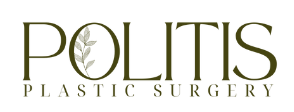Key Takeaways:
- Dr. Effie Politis demonstrates the importance of communication and hospitality in her patient care at Politis Plastic Surgery in Tampa, FL.
- Dr. Politis has transferred the skills she learned in the restaurant industry to her plastic surgery practice, emphasizing the importance of genuine connections with patients.
- Comprehensive care at Politis Plastic Surgery includes not only technical expertise, but also addressing the emotional needs of patients and providing the necessary support and guidance.
A Unique Perspective In The World Of Plastic Surgery
As you walk into the offices of Politis Plastic Surgery in Tampa, FL, you might expect to find the same sterile, impersonal environment that accompanies many medical practices. Instead, you find yourself greeted by a warm and engaging plastic surgeon, Dr. Effie Politis, who has a compelling story to tell about her journey from the restaurant industry to the world of breast augmentation and beyond. In this article, we will explore Dr. Politis’ unique background and how growing up in a diner impacted her approach to patient care.
The Art Of Conversation – A Dying Skill In The Hospitality Industry
Before diving into the world of plastic surgery, Dr. Effie Politis grew up in the restaurant industry, where she learned the value of communication and hospitality. “So we did not have devices or electronics to keep us busy. We didn’t even have much to watch on cable. So we’d go to our diner where there was a variety of people and we could speak to everyone. And that was what we did. We spoke to older people, mainly older people, younger people, people with families, and it created a, you were able to hold a conversation. You were able to answer questions and problem solve.”
Today, however, the art of conversation is slowly dying in the restaurant business as technological advances and impersonal interactions have taken center stage. This trend is evident with menus becoming more specific and customers placing orders on computers, reducing opportunities for genuine connection.
Connecting The Dots – How Hospitality Translates To Patient Care
For Dr. Effie Politis, the communication skills honed during her time in the restaurant industry have proven to be invaluable in her medical practice as a plastic surgeon in Tampa, FL. “I think that type of talking with customers has, you know, transferred to great patient care now because I do enjoy talking to the patients. There’s some physicians that don’t enjoy that aspect, but I do enjoy the patient care aspect.”
In a field where trust and understanding are paramount, Dr. Politis recognizes the importance of fostering genuine connections with her patients. Her ability to communicate effectively, address concerns, and provide personalized care sets her apart from others in the world of plastic surgery.
Comprehensive Care – Beyond Surgical Procedures
As a dedicated professional, Dr. Effie Politis understands that successful plastic surgery isn’t just about the surgical procedure itself. Instead, it encompasses a full spectrum of care that includes building relationships with patients, addressing their emotional needs, and providing the necessary support and guidance throughout the entire process.
By applying the same standards of hospitality and communication that she learned in the restaurant industry, Dr. Politis has been able to create a unique and patient-focused environment at her clinic in Tampa, FL – one where patients can feel comfortable and well taken care of.
Politis Plastic Surgery – A Refreshing Approach To Patient Care
In a world where genuine human interactions are becoming increasingly rare, the approach taken by Dr. Effie Politis at her Tampa, FL practice is both refreshing and much-needed. Her background in the restaurant industry may seem an unlikely training ground for a plastic surgeon, but her ability to apply the principles of hospitality and communication to the delivery of breast augmentation and other surgical procedures has made a significant impact on her patients’ experiences.
If you’re looking for a skilled plastic surgeon in Tampa, FL who not only possesses the technical expertise required for exceptional results but also values the importance of meaningful patient interactions, Dr. Effie Politis at Politis Plastic Surgery should be at the top of your list.
References:
- “Understanding the Importance of Communication in Health Care.” https://online.regiscollege.edu/blog/importance-communication-health-care/.
- “Cosmetic Surgery and the Importance of Communication – Dr. Reilly.” 3 Dec. 2021, https://reillyfps.com/cosmetic-surgery-and-the-importance-of-communication/.
- “Cosmetic Surgery and the Importance of Communication.” 26 Nov. 2021, https://www.psychologytoday.com/us/blog/dissecting-plastic-surgery/202111/cosmetic-surgery-and-the-importance-communication.
Transcription:
Hi, my name is Dr. Effie Politis with Politis Plastic Surgery. Other thing I think the restaurant business taught me is it kind of ingratiates you into that hospitality industry. So you are, and this is what our kids are lacking nowadays. So we did not have devices or electronics to keep us busy. We didn’t even have much to watch on cable. So we’d go to our diner where there was a variety of people and we could speak to everyone. And that was what we did. We spoke to older people, mainly older people, younger people, people with families and it created a, you were able to hold a conversation. You were able to answer questions and problem solve. And that’s what’s lacking in today’s restaurant industry because everything is very specific on the menu. People are ordering on computers. So I think that type of talking with customers and has, you know, transferred to great patient care now because I do enjoy talking to the patients. There’s some physicians that don’t enjoy that aspect, but I do enjoy the patient care aspect.




 When considering
When considering 



 You’re at a crossroads. You’ve decided to undergo
You’re at a crossroads. You’ve decided to undergo 


 When it comes to battling the signs of aging, the neck can be a formidable opponent. Despite your best efforts to stay fit and healthy, the neck can sag and wrinkle, betraying your age and stealing your confidence. Enter the
When it comes to battling the signs of aging, the neck can be a formidable opponent. Despite your best efforts to stay fit and healthy, the neck can sag and wrinkle, betraying your age and stealing your confidence. Enter the 